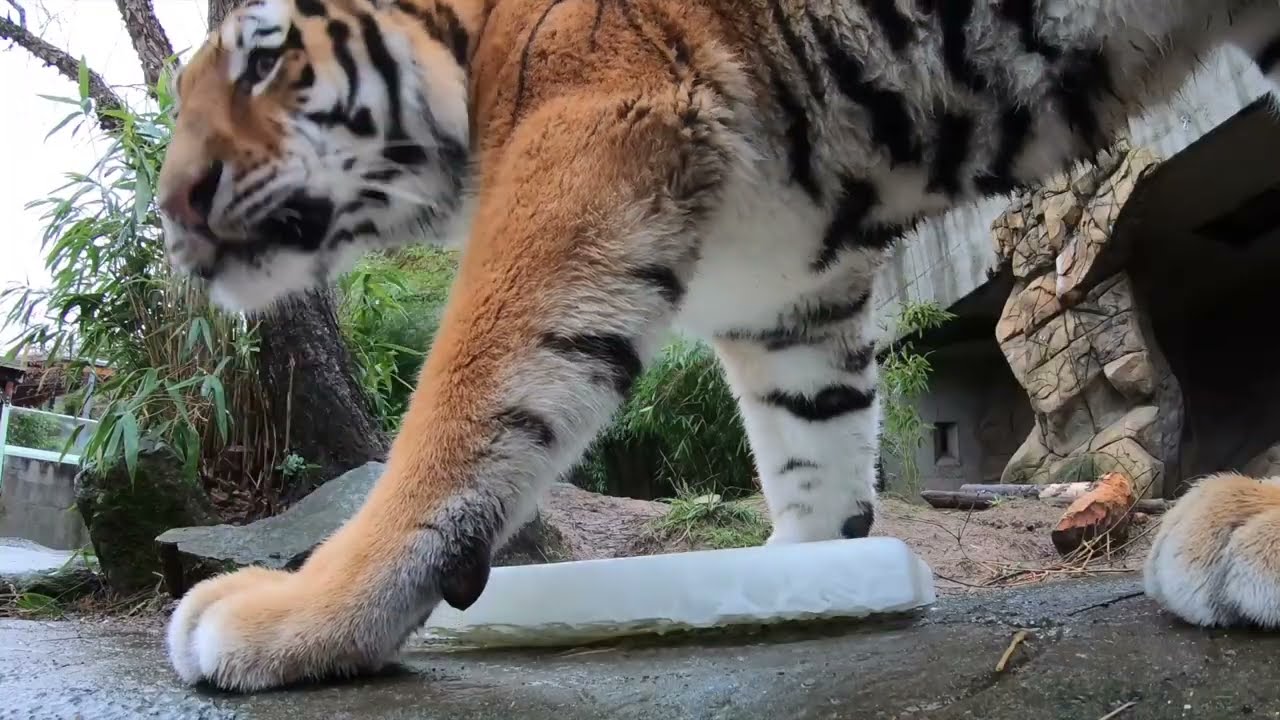- The unique social behavior of Amur tigers and implications for ecosystem dynamics.
- The role of enrichment activities in zoo management and animal welfare.
- Conservation efforts and strategies for Amur tigers in the wild and in captivity.
- Scientific and educational significance of observing animal behaviors in controlled settings.
- Challenges in wildlife conservation and the importance of global collaboration.
Amur Tigers, also known as Siberian tigers, are among the largest and most powerful feline species on the planet. Found predominantly in the Far East, these tigers roam the birch forests and mountainous regions of Russia and China. Interestingly, they are solitary animals, preferring a solitary existence outside of mating periods or when mothers raise cubs. The video of Amur tiger brothers sharing a popsicle provides a fascinating glimpse into the social dynamics of these typically lone creatures. This rare behavior can offer insights into their ecological roles and social structures. When observed sharing a treat, it serves as a reminder of the complex social bonds that may exist even in species known for their solitude.
In zoos, behavioral enrichment is a crucial component of animal welfare. Enrichment activities might seem trivial, but they play a significant role in simulating the animals’ natural environment and behaviors. The Amur tiger brothers’ interaction over a popsicle demonstrates an enrichment success story. By mimicking hunting and sharing behaviors as seen in the wild, zoo management not only facilitates physical activity but also stimulates mental processes in tigers. These activities can mitigate stress, promote natural behaviors, and improve overall well-being. Understanding the importance of enrichment allows zoos to better manage animal populations and provide more engaging environments for them.
Conservation of Amur tigers is both a challenge and a priority for conservationists worldwide. The species, listed as endangered, faces threats from habitat loss, poaching, and illegal wildlife trade. Efforts to conserve these magnificently striped felines require comprehensive strategies involving habitat restoration, anti-poaching measures, and strict enforcement of wildlife protection laws. Zoos play a pivotal role in these efforts through managed breeding programs. By maintaining genetic diversity and preparing individuals for potential reintroduction to the wild, these programs are integral to sustaining the Amur tiger population. The popsicle-sharing video reminds us of the potential for continued support and awareness efforts essential to their survival.
Observing animal behaviors in controlled environments offers many scientific and educational benefits. It allows researchers and the public to gather crucial data about species that are otherwise difficult to study in the wild. In the case of Amur tigers, detailed observation can reveal insights about their health, diet, and social interactions. Such settings provide a platform for educational outreach, fostering greater understanding and appreciation of wildlife. These encounters can inspire future generations of conservationists and zoologists, as well as enrich the public’s knowledge and empathy towards endangered species.
Global collaboration is indispensable in addressing the challenges of wildlife conservation. The survival of Amur tigers hinges not only on local conservation initiatives but also on international cooperation between governments, NGOs, and local communities. These partnerships facilitate knowledge exchange and mobilize resources necessary for effective conservation practices. The role of zoos extends beyond borders, providing a haven for species preservation and contributing to global conservation dialogues. The video serves as a subtle reminder that preserving biodiversity requires unity and shared responsibility across nations.
Through understanding their social behaviors, enhancing their welfare in captivity, and safeguarding their existence in the wild, we can strive to create a future where Amur tigers continue to roam freely and thrive. Whether they are observed sharing a simple treat like a popsicle, these majestic creatures stand as ambassadors of nature’s splendor and resilience.
*****
Source Description
Purrfect popsicle
One of Amur tiger brothers Luka and Dmitri’s favorite treats is frozen goat milk. Their rough tongues can lick meat off a bone, or take down a frosty snack!


